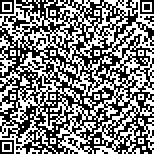本文已被:浏览 1459次 下载 3576次
投稿时间:2010-04-15 修订日期:2010-07-25
投稿时间:2010-04-15 修订日期:2010-07-25
中文摘要: 对2006年1月至2009年12月的飞机观测气温资料进行了质量控制,在此基础上通过其和常规高空气温资料的对比分析对飞机观测气温的可用性进行了评估。我国绝大部分飞机观测资料由B737 800和B737 700型飞机观测而得。统计结果表明:两种型号飞机的观测气温和常规高空观测气温的差值分布存在一定差异;差值呈准对称分布,64%的差值分布在-1 ℃至1 ℃;不同高度层上的差值不同。相对于常规高空观测气温,飞机观测气温值在700 hPa及以下偏低,在500 hPa及以上偏高。飞机观测气温和常规高空观测气温的差值大小和飞机型号及飞行状态有关。以北京地区的资料为例,利用北京首都机场上空飞机观测气温统计得到的月值和北京探空站常规高空观测气温月值没有显著性差异,各层次、时次的月值差异基本维持在-1 ℃至0.5 ℃之间。
中文关键词: 飞机观测, 常规高空观测, 气温, 对比分析
Abstract:With the view of comprehensive understanding of the systematic difference in aircraft and radiosonde temperatures, the paper checks the quality of Chinese aircraft temperature data from January 2006 to December 2009 by use of the quality control method, which consists of four steps: metadata check, validity check, temporal consistency check, and spatial consistency check basing background field of T213 model of National Meteorological Information Center. Statistical method is used to do a comparative analysis between aircraft and radiosonde temperatures in China from January 2006 to December 2009. The analysis content about difference in aircraft and radiosonde temperatures includes the following: frequency of bias, the vertical distribution of bias, the relation of flight level and bias, the relation of flight phase and bias, the difference of bias observed by different type of aircraft, and monthly value difference of aircraft and radiosonde temperature. The data used to analyze are distributed in seventy large and medium cities of the east central China. The statistical result shows that, the frequency of difference is an approximate symmetrical curve. The maximum frequency of difference is from -0.5 ℃ to 0.5 ℃. The 64% of difference value is in the range from -1 ℃ to 1 ℃. Relative to radiosonde temperature, aircraft temperature is obviously lower on 1000 hPa. The difference from 925 hPa to 700 hPa is smaller. Aircraft temperature is higher than radiosonde temperature on 500 hPa and above level, and the difference has a gradual increase with height. The difference of aircraft and radiosonde temperatures relies on flight phase. From 925 hPa to 700 hPa, aircraft temperature observed in ascent phase is lower than radiosonde, but aircraft temperature observed in descent phase and level flight phase is quite the contrary. On 500 hPa and above level, aircraft temperatue observed in level flight phase is closest to radiosonde. Most aircraft temperature data in China is observerd by B737 800 aircraft and B737 700 aircraft. From January 2006 to December 2009, the propotion of data observed by B737 800 aircraft is about 83.3 percent, and the propotion of data observed by B737 700 aircraft is about 7.1 percent. Temperature difference between B737 700 aircraft and radiosonde is larger than temperature difference between B737 800 aircraft and radiosonde. There is no significant difference between monthly temperature calculated by aircraft temperature on Beijing Capital Airport and radiosonde monthly temperature. Almost all the difference values of monthly temperature are from -1 ℃ to 0.5 ℃.
文章编号: 中图分类号: 文献标志码:
基金项目:中国气象局基建项目“资料质量控制与同化技术”资助
| 作者 | 单位 |
| 廖捷 | 国家气象信息中心, 北京 100081 中国科学院大气物理研究所大气科学和地球流体力学数值模拟国家重点实验室, 北京 100029 中国科学院研究生院, 北京 100049 |
| 任芝花 | 国家气象信息中心, 北京 100081 |
引用文本:
廖捷,任芝花,2011.我国飞机观测气温和常规高空观测气温的对比分析[J].气象,37(3):263-269.
LIAO Jie,REN Zhihua,2011.Comparative Analysis on Aircraft and Radiosonde Temperatures in China[J].Meteor Mon,37(3):263-269.
廖捷,任芝花,2011.我国飞机观测气温和常规高空观测气温的对比分析[J].气象,37(3):263-269.
LIAO Jie,REN Zhihua,2011.Comparative Analysis on Aircraft and Radiosonde Temperatures in China[J].Meteor Mon,37(3):263-269.

